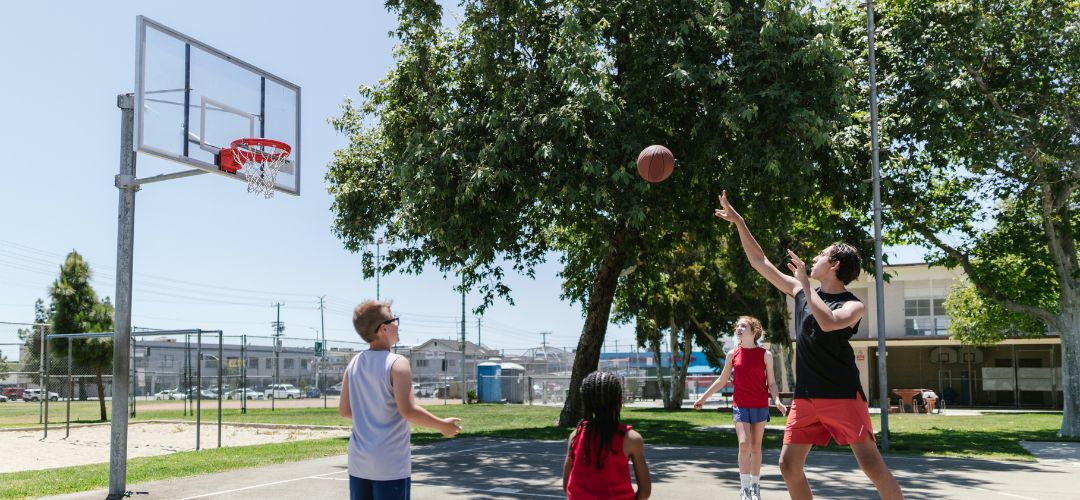35Views
The importance of the youth playing grassroots sports

Grassroot sports are something that should be available to everyone. We all like to follow the major teams and big stars in football, basketball, and baseball, but it’s also important to support local teams and clubs.
Even more important is to make sure that everyone who wants to can participate in sports at an appropriate level, and to provide encouragement to the young, the disadvantaged, and the potentially excluded to take part.
Grassroots sports can be defined as community-driven sports activity at a local level that is mainly recreational, rather than being about achieving high levels of performance or commercial success.
It’s often facilitated by small clubs and sports organizations staffed by volunteers, although sometimes a major sporting organization, such as the local basketball team, may donate facilities and support.
These teams may be looking to develop the players of tomorrow, but they are also giving something back to their community in allowing them to enjoy sports participation for its own sake.
In terms of youth sports, we can also look to schools and colleges as well as informal activities using facilities – playing fields, courts and halls – maintained and run by local government or the community.
Young people often self-organize, though in other cases, parents, teachers and other local stakeholders may get together to arrange ‘little league’ games and the like.
Physical education programs, in high school and earlier, are also foundational in terms of developing an interest in sport and providing a gateway to participation.
The importance of sport
The importance of grassroots sports participation can be understood in multiple ways. Most obviously, sport is a great way of achieving physical health, and is possibly the best way to combat general, lifestyle-related poor health on a community basis.
Childhood obesity, in particular, is a huge problem across the US along with related conditions such as diabetes. Encouraging and facilitating regular physical exercise through sports can go a long way to combating that health issue.
Mental health
Less well-documented, but equally important, is the impact of sports participation on mental health. Physical exercise can be as effective for mild clinical depression as medication, as strenuous activity stimulates feel-good chemicals in the brain.
Sports give back more than solitary exercise does in this regard, however. Playing as part of a team, achieving goals, taking responsibility and following discipline can all help build confidence and self-respect.
Grassroots sport brings communities together, combating isolation which is often one of the most debilitating factors where mental health is concerned.
Youth sports can be enormously beneficial for children with behavioral problems, and this, in turn, can lead to better educational and career opportunities. Communities with active youth sports programs also often see a corresponding reduction in crime and anti-social behavior.
Opportunities for youth
Charitable organizations such as the 2×2 Foundation, established by entrepreneur and former college football star Nick Palazzo, recognize the importance of youth sports in terms of providing opportunities for young people that may not otherwise be available.
Palazzo’s foundation focuses on athletic scholarships, particularly for young women, and for refurbishing and rebuilding rundown athletic facilities. Access to sports for all, regardless of gender, ethnicity, sexuality or social background, needs to be a priority. This also includes sports provision for those with disabilities or other health issues.
Challenges faced
Despite support from foundations, government and private organizations, grassroots sports clubs face many challenges. Inexperience can lead to poor organizational practice, while volunteer staff and coaches may face unrealistic expectations, particularly from parents in the case of youth groups. A lack of facilities and equipment that is fit for purpose is often an especially pressing concern, and all these factors can lead to a high level of participant drop-out.
Social hub
In spite of this, grassroots sports clubs are often a social hub in their community, providing a wide range of services that go beyond their basic sports remit.
They may have a bar or café that is widely used, promote dances and other musical events, and contribute to charity, often including food drives for the homeless.
There is great evidence that grassroots sports organizations bring communities together, not just through the actual games and matches but through wider activities that provide a focus for a town or neighborhood.
Greater support
As such, it’s clear that grassroots and youth sport needs greater support. The focus should be on inclusive participation and encouragement rather than competition.
Community assets like playing fields need to be protected, while volunteers need to be screened and trained to safeguard the welfare of participants.
By improving physical and mental health and providing opportunities for individuals and groups who may otherwise be marginalized and excluded, grassroots and youth sport provides a massive social service.
Clubs also contribute to community cohesion and in myriad other ways. Recognition of this is essential for the future health of society as a whole.



